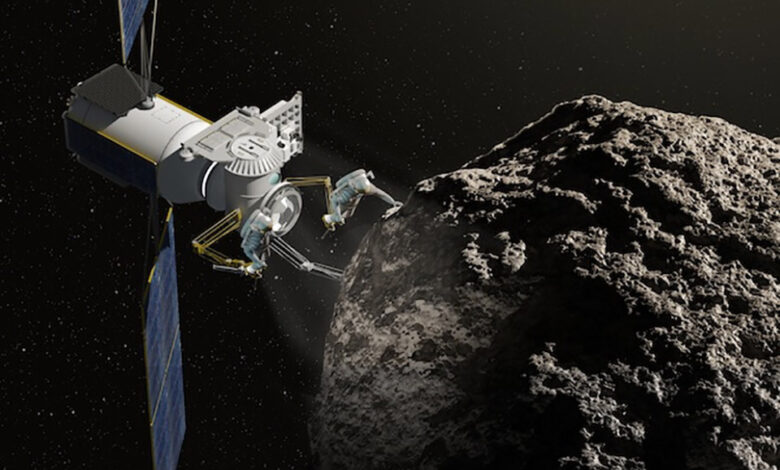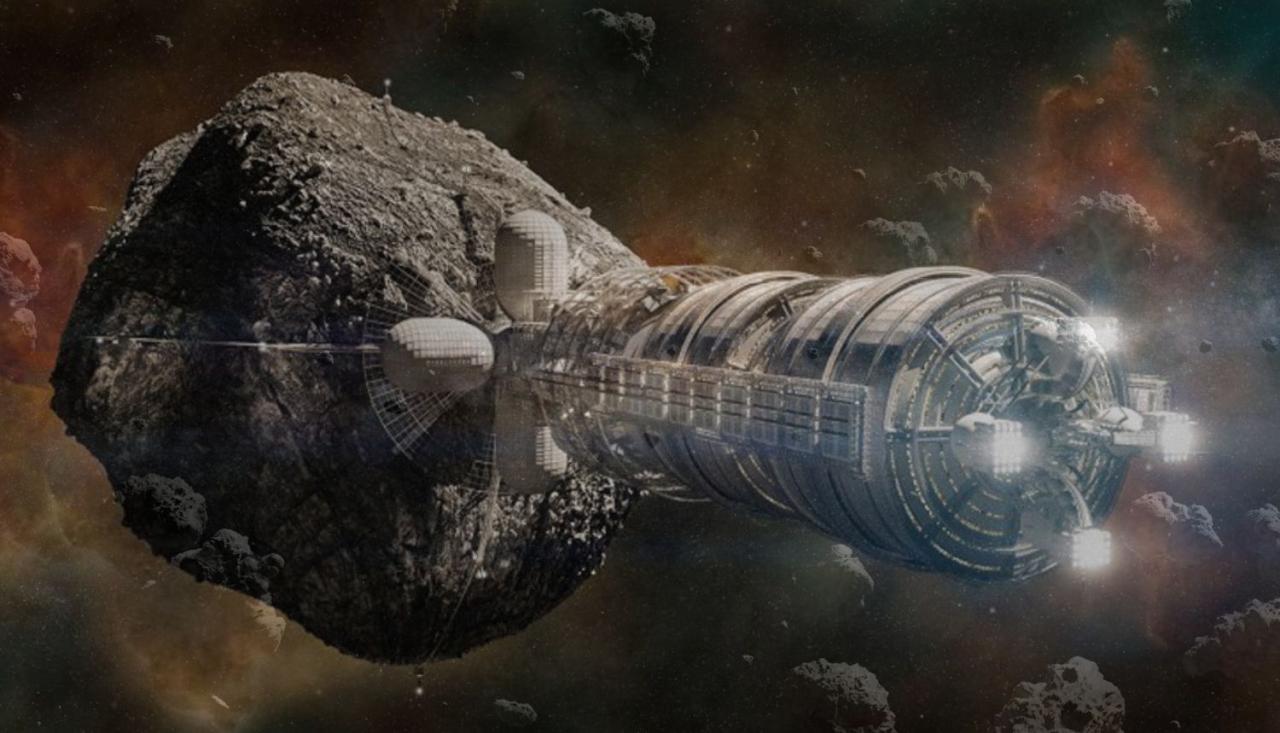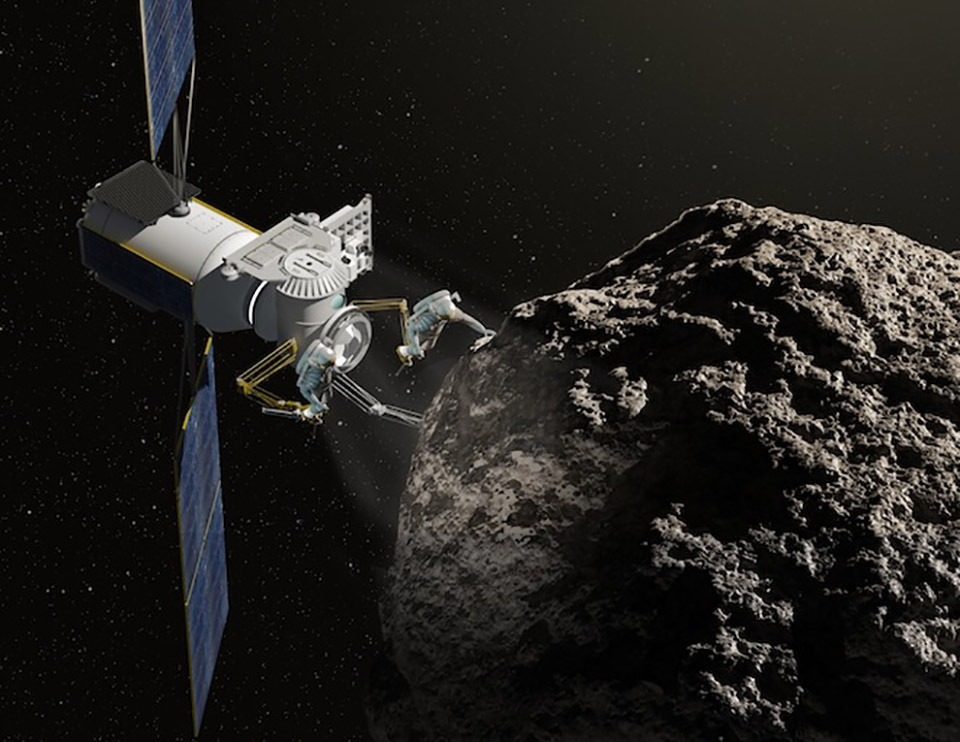
Asteroid Mining Could Be Here Sooner Than You Think
Asteroid mining could be here sooner than you think! Forget science fiction; the reality of harvesting valuable resources from space is rapidly approaching. Recent breakthroughs in robotics, AI, and propulsion systems are making previously impossible missions increasingly feasible. This isn’t just about futuristic dreams; it’s about unlocking a wealth of resources that could revolutionize our economy and our understanding of the universe.
Imagine a future where rare earth elements are readily available, space travel is more affordable, and the limitations of terrestrial resources are a distant memory.
The potential economic benefits are staggering. Platinum group metals, water – essential for life and rocket fuel – and other valuable materials are abundant in asteroids. But the journey won’t be without its challenges. We’ll need to navigate complex legal and ethical considerations, overcome significant technological hurdles, and address the financial risks inherent in such a large-scale endeavor.
The race is on, and the rewards for the pioneers who successfully navigate this new frontier will be immense.
Technological Advancements in Asteroid Mining: Asteroid Mining Could Be Here Sooner Than You Think

Asteroid mining, once relegated to the realm of science fiction, is rapidly becoming a tangible reality. Significant breakthroughs in various technological fields are paving the way for the efficient and economically viable extraction of valuable resources from asteroids. These advancements are not only pushing the boundaries of space exploration but also promise to revolutionize resource management on Earth.
Spacecraft Propulsion System Advancements
Recent years have witnessed remarkable progress in spacecraft propulsion, crucial for the long and challenging journeys to asteroid fields. The development of advanced ion propulsion systems, utilizing electric fields to accelerate ions and generate thrust, offers significantly higher fuel efficiency compared to traditional chemical rockets. This increased efficiency translates to faster travel times and reduced mission costs, making asteroid mining missions more feasible.
Furthermore, solar sails, which harness the momentum of sunlight to propel spacecraft, are showing increasing promise as a sustainable and cost-effective propulsion method for longer-duration missions. The ongoing research into nuclear thermal propulsion, which uses nuclear reactors to heat a propellant, holds the potential for even faster and more efficient travel to distant asteroids.
Advancements in Robotic Technology and AI for Autonomous Operations, Asteroid mining could be here sooner than you think
Autonomous robotic systems are essential for asteroid mining operations, given the vast distances involved and the inherent dangers of space. Significant progress has been made in developing robots capable of operating independently in the harsh environment of space. These robots incorporate advanced sensors, AI-powered navigation systems, and sophisticated manipulation capabilities. Machine learning algorithms are being used to improve robotic dexterity and decision-making, enabling them to adapt to unexpected situations and perform complex tasks such as drilling, sample collection, and processing.
The increasing sophistication of AI allows for greater autonomy, reducing reliance on real-time human control and minimizing communication delays inherent in deep-space operations.
Asteroid Resource Extraction Methods and In-Situ Resource Utilization (ISRU)
Several methods are being explored for extracting resources from asteroids. One approach involves physically returning asteroid samples to Earth for processing. However, this method is costly and inefficient for large-scale operations. A more promising approach is in-situ resource utilization (ISRU), where resources are processed directly on the asteroid. This reduces the need for costly transportation back to Earth.
Different ISRU techniques are under development, including methods for extracting water ice (for propellant and life support), metals (for construction and manufacturing), and other valuable materials. These techniques involve a combination of robotic drilling, processing, and refining technologies. The choice of extraction method depends on the type of asteroid, the target resources, and the overall mission objectives.
Hypothetical Robotic Arm for Asteroid Sample Collection
A hypothetical robotic arm designed for asteroid sample collection could incorporate multiple degrees of freedom for precise manipulation, a variety of end effectors (such as drills, scoops, and grippers) to handle diverse materials, and advanced sensor systems (including cameras, spectrometers, and proximity sensors) for accurate targeting and sample analysis. The arm would need to be robust enough to withstand the harsh conditions of space, including extreme temperature fluctuations and micrometeoroid impacts.
Limitations could include the arm’s reach and payload capacity, its power consumption, and the challenges of operating in low-gravity or microgravity environments. Redundancy in the arm’s design would be crucial to ensure continued operation even in the event of component failure.
Energy Requirements of Different Asteroid Mining Techniques
| Mining Technique | Energy Source | Estimated Energy Consumption (kWh) | Notes |
|---|---|---|---|
| Sample Return (Small Asteroid) | Solar/Chemical Propulsion | 10,000 – 100,000 | Highly variable depending on distance and payload. |
| ISRU Water Extraction | Solar Power | 100 – 1000 (per kg of water) | Dependent on ice concentration and extraction method. |
| ISRU Metal Extraction (Refining) | Nuclear Reactor (Hypothetical) | 1000 – 10,000 (per kg of metal) | Requires significant energy for high-temperature processing. |
| Asteroid Surface Processing (In-situ) | Solar Power/Radioisotope Thermoelectric Generators (RTGs) | Variable, depending on scale and processes. | Could range from hundreds to thousands of kWh depending on the scale. |
Economic Viability and Business Models

Asteroid mining, once relegated to the realm of science fiction, is rapidly approaching economic feasibility. The immense potential wealth locked within asteroids, particularly in the form of platinum group metals and water, is driving significant investment and innovation in this nascent industry. Understanding the economic viability and potential business models is crucial to unlocking this potential and transforming asteroid mining from a futuristic concept into a profitable reality.
Potential Economic Benefits of Asteroid Mining
The economic benefits of asteroid mining are potentially transformative. Platinum group metals (PGMs) – platinum, palladium, rhodium, iridium, osmium, and ruthenium – are crucial for various applications, including catalytic converters, electronics, and medical devices. Their scarcity on Earth and high demand drive up prices, making even small asteroid deposits incredibly valuable. For example, a single asteroid could contain more platinum than has ever been mined on Earth.
Beyond PGMs, water extracted from asteroids could be invaluable. It can be broken down into hydrogen and oxygen, providing rocket propellant for in-space operations, significantly reducing launch costs from Earth and enabling more extensive space exploration. This “in-space refueling” drastically alters the economics of space travel.
Potential Business Models for Asteroid Mining Companies
Several business models are emerging for asteroid mining companies. One model involves direct extraction and sale of valuable materials to terrestrial markets. This model faces significant challenges in transportation and processing, but the potential returns are substantial. Another approach focuses on partnerships with space agencies like NASA or ESA. Government funding and collaborative research can mitigate some of the risks associated with the high upfront costs of developing the necessary technologies.
Private-public partnerships offer a balanced approach, leveraging the innovation of private companies with the resources and regulatory power of government agencies. Joint ventures between established mining companies and space exploration firms could also play a significant role in driving the industry forward, combining expertise in resource extraction with experience in space operations.
Challenges to the Economic Viability of Asteroid Mining
Despite the potential rewards, several challenges hinder the economic viability of asteroid mining. Transportation costs are astronomical (pun intended!), both in terms of launching equipment to asteroids and returning mined materials to Earth. The distances involved and the energy requirements are immense. Regulatory hurdles also pose a significant challenge. The legal framework governing the ownership and exploitation of space resources is still evolving, creating uncertainty and potentially delaying investment.
Technological limitations also remain; developing robust and reliable robotic systems capable of operating in the harsh environment of space is a major technological and engineering hurdle. Finally, the inherent risks of space operations, including equipment failure and unforeseen circumstances, must be factored into any economic assessment.
Hypothetical Business Plan for an Asteroid Mining Company
Let’s consider a hypothetical company, “Asteria Mining,” focusing on the extraction of PGMs from a near-Earth asteroid. Asteria Mining would secure initial funding through a combination of venture capital, private equity, and potentially government grants focused on space resource utilization. The company would develop and deploy a robotic mining system capable of autonomous operation, utilizing advanced AI and robotics.
Revenue would be generated from the sale of refined PGMs to industrial and technological companies. The long-term vision includes establishing an in-space processing facility to reduce transportation costs and maximize profitability.
Projected Costs and Revenues for a Hypothetical Asteroid Mining Operation
| Year | Costs (USD Millions) | Revenues (USD Millions) | Profit/Loss (USD Millions) |
|---|---|---|---|
| 1 | 150 | 0 | -150 |
| 2 | 100 | 0 | -100 |
| 3 | 75 | 0 | -75 |
| 4 | 50 | 10 | -40 |
| 5 | 30 | 50 | 20 |
| 6 | 20 | 100 | 80 |
| 7 | 15 | 150 | 135 |
| 8 | 10 | 200 | 190 |
| 9 | 5 | 250 | 245 |
| 10 | 5 | 300 | 295 |
The prospect of asteroid mining is both exhilarating and daunting. The potential benefits for humanity are enormous, from solving resource scarcity to enabling further space exploration. However, careful planning, international cooperation, and a responsible approach are vital to ensure this endeavor benefits all of humankind. As technology continues to advance at an unprecedented pace, the dream of asteroid mining is quickly becoming a tangible reality, a reality that promises to reshape our future in profound ways.
Are you ready for the next space race?
Asteroid mining? It’s not science fiction anymore! The sheer technological advancements needed to make this a reality are mind-boggling, and that brings me to something else I’ve been reading about: the reasons behind the massive growth of America’s tech giants, which you can check out here: why americas tech giants have got bigger and stronger. That kind of innovation and investment power is exactly what’s fueling the push towards space resource utilization, making asteroid mining a much more realistic prospect than most people realize.
Seriously, asteroid mining feels closer than ever! It’s amazing to think about the potential resources out there, and it makes you wonder about the shifts in political power, like what’s happening with Tulsi Gabbard, who, as reported by this article , is stumping for a GOP candidate after leaving the Democrats. Maybe space resources will change the political landscape even more dramatically.
Back to asteroids though – the future of mining might be among the stars!
Asteroid mining? It’s closer than you think! The sheer economic potential is mind-boggling, potentially dwarfing even the losses some nations faced from protectionist policies – like those detailed in this insightful article on china, Europe, and Mexico as the biggest losers from Trumponomics. Imagine the global shift if we unlocked the resources of space; it could easily redefine economic power dynamics, making asteroid mining a truly game-changing development.

